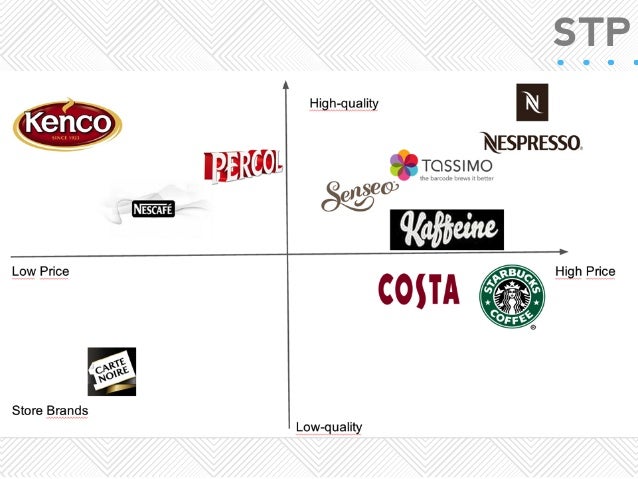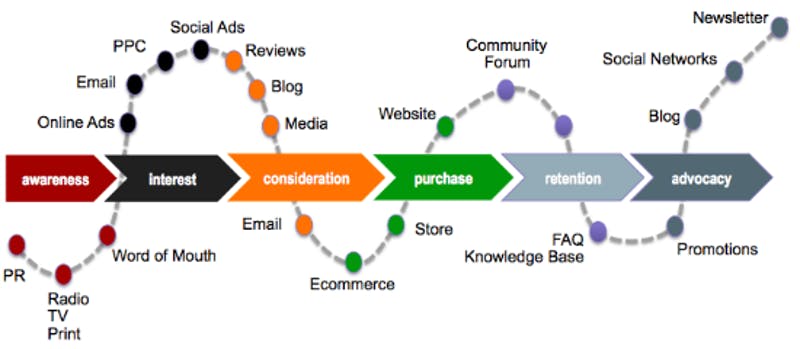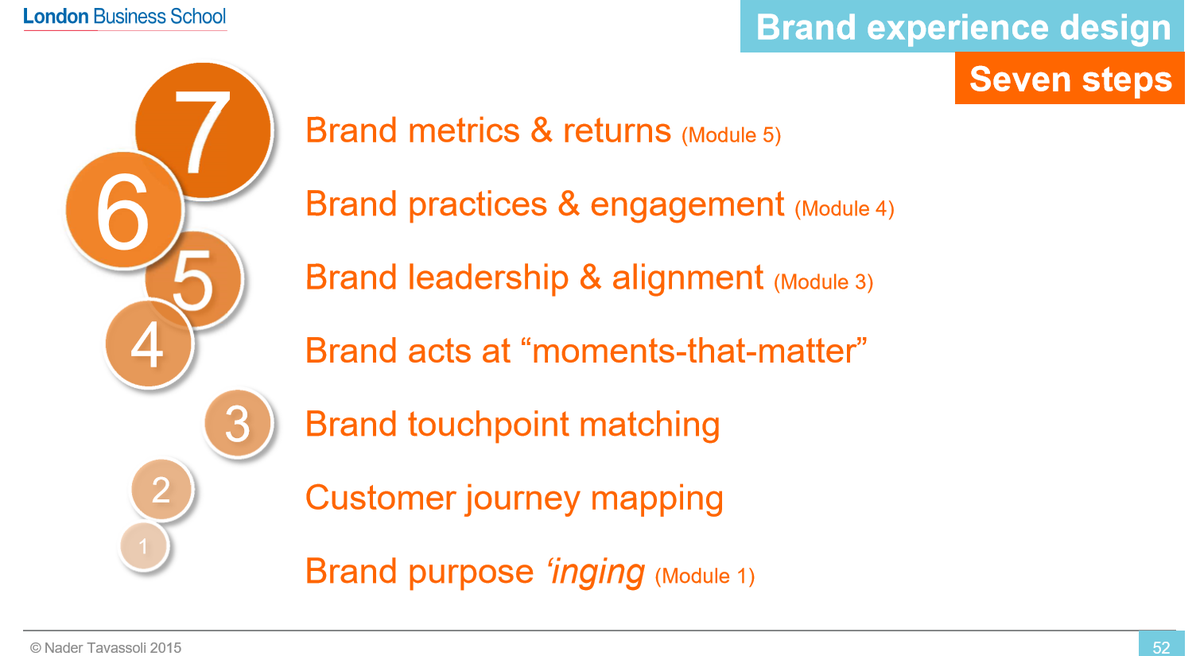Brand Management: Aligning Business, Brand and Behaviour
Experience = the perceptions of an event, episode or encounter that leave an impression. Brand Image is the 'register' of such impressions.
What we do, rather than we have. Things we done and not own. Bucket list! Use experiences as a way to build a brand and prevent experiences that might destroy a brand.
Satisfaction = expectation - experience. Advertising raises the expectation. Experience = reality.
Switch Marketing to building the experience.
great brand-driven customer experiences:
Declare what your brand will stand for. When you choose very purposeful words like leading, globally, relevant, luxury and British, you have, in effect, chosen the hallmarks of what your experience has to deliver upon.
Choose a target wisely. More often than not Millennials are the influencers, tastemakers, official critics and reviewers in society today. They also happen to be incredibly brand loyal as a collective whole, with an increasingly attractive level of disposable income.
Design an experience that delivers your brand promise to the target audience. Once the first two objectives were in order, developing an experience became directionally straightforward. It’s not a simply a matter of fixing broken links in the customer journey, it is about understanding the customers’ needs and motivations and designing an experience that best meets that need.
Create a branded experience, branded signature touchpoints and the organizational alignment to empower employees to bring the brand to life in unique and surprising ways.
Continue to innovate the experience and the brand.
Experience = the perceptions of an event, episode or encounter that leave an impression. Brand Image is the 'register' of such impressions.
What we do, rather than we have. Things we done and not own. Bucket list! Use experiences as a way to build a brand and prevent experiences that might destroy a brand.
Satisfaction = expectation - experience. Advertising raises the expectation. Experience = reality.
Switch Marketing to building the experience.
Digital Brand Experiences:
no humans / instant price comparison
lower cost because of no human interaction (efficiency)
Nespresso - member club experience / the digital transformation enhance the brand experience (what they want to communicate - brand promise)
Capabilities of internet... no time zone, my store! challenges for managing globally although each market has different aspects = consistent way / personalisation (ex. Spotify)
Digital branding is a brand management technique that uses a combination of internet branding and digital marketing;online marketing to develop a brand over a range of digital venues, including internet-based relationships, device-based applications or media content.

Reach is simple–it is just the number of people that can participate in the sharing of the information in question. The concept of the trade-off between richness and reach is that before the world of e-commerce, it was hard to share rich information with a lot of people–that is, achieve reach.

Brand Experience - Differentiate the Brand!
Differentiation traditional seen as the net value, brand's relevant PODs (points-of-difference) minus POIs (points-of-iteriority) as measured against competitors.

Atrributes of the product /match-score/ Benefits for the consumer
Customer's Journey:

 Enhance the Brand Purpose
Enhance the Brand Purpose

customers: learning, navigating (through internet), buying, trying, using, disposing (different events of the journey)
"inging"
DO> delivering on the brand promise
Nudge is a concept in behavioral science, political theory and behavioral economics which proposes positive reinforcement and indirect suggestions as ways to influence the behavior and decision making of groups or individuals.
Make as smooth as possible the consumer's journey. Ask deeper and deeper and understand the most emotional state of consumer.
Level: Functional - Rational - Emotional
ex. Harley-Davidson = deliver holistic experience
Shift from the product = experience
Sales Funnel: Aware(learn)-Conside(choose)-Try(buy)-Adopt(repeat) /not the same as customer journey/ do not confuse
Map the customer journey, the key steps (decision...) moments that matter - deliver brand & experience.

User experience is critical tied to the product/service.
Experience design:
1.Map the key steps of different customer journeys.
2.From a customer experience perspective, evaluate. (+,-,=)
(find the meaningful moments that matter-create brand experience, digging deeper)
3.What can do different to improve customer experience and/or deliver the brand.






